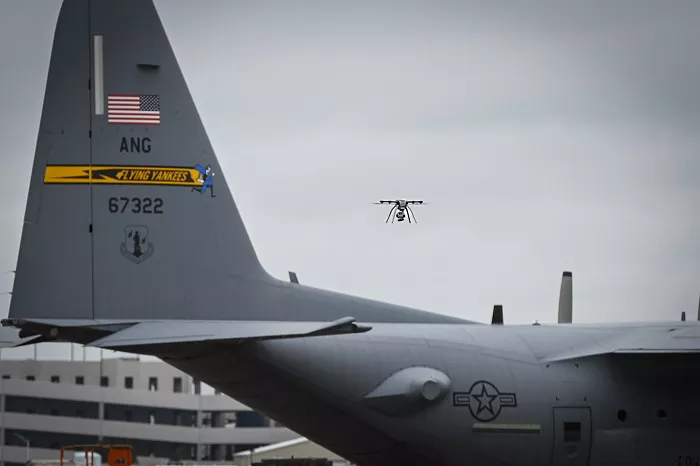Pentagon officials told Congress on April 29 that the U.S. military still lacks the tools needed to fully detect, track, and respond to hostile drones — even after repeated incidents near major bases, including one at Langley Air Force Base that lasted 17 days.
Members of the House Committee on Oversight and Government Reform expressed deep concern over the military’s drone defense capabilities. Lawmakers pointed to the Langley breach in December 2023, which forced F-22 fighter jets to be relocated. Other drone sightings have since been reported near military bases from Utah to the United Kingdom.
“There were over 350 drone detections at 100 different military installations last year alone,” said Rep. William Timmons (R-S.C.). “This isn’t about hobby drones. These are coordinated efforts by our enemies to gather intelligence on our most sensitive equipment.”
Timmons criticized the military for having “inadequate or nonexistent monitoring capabilities” and little ability to stop such drone threats.
Mark Ditlevson, acting assistant secretary of defense for Homeland Defense and Hemispheric Affairs, told lawmakers that the Pentagon is working to improve how it detects and identifies drones. He said officials are focused on understanding what’s flying in U.S. airspace and how to tell the difference between accidental intrusions and threats.
The Pentagon is collaborating with the Joint Rapid Acquisition Cell to quickly obtain new tools to help commanders take both non-lethal and lethal action against drones. However, Ditlevson admitted that defending U.S. soil from drones is harder than doing so in war zones.
He explained that counter-drone systems used overseas, such as radio jamming, could interfere with emergency services or weather systems at home. “That makes operations much more complex,” he said in a written statement.
Rep. Suhas Subramanyam (D-Va.) questioned whether the military is falling behind in developing the technology needed to stop more advanced drones.
Rear Adm. Paul Spederol, vice director for operations on the Joint Chiefs of Staff, agreed that drone technology has outpaced efforts to defeat it. He said drones have evolved rapidly from simple radio-controlled models to fully autonomous machines that don’t rely on GPS, making them harder to stop.
“We need to work with the Department of Homeland Security, the FBI, and local law enforcement to push industry to catch up,” Spederol said.
Spederol also acknowledged that many base commanders don’t have enough tools to monitor drone activity over their facilities. He called for more domain awareness sensors, saying that multiple sensor types are needed to detect different kinds of drones and flight patterns.
To help close the gap, the military is deploying “flyaway kits” to bases with little or no detection capability. These kits, along with trained personnel, can be sent quickly after a commander files a request with U.S. Northern Command.
Rep. Michael Cloud (R-Texas) raised concerns about the military’s spending priorities. He pointed out that while billions are spent on legacy fighter jets, far less is spent on drone and counter-drone programs — despite the growing threat.
“It seems like we’re spending $22 billion on fighter jets and maybe $1 billion on drone technology,” Cloud said. “Taxpayers wonder how we can spend $800 billion on defense and still be unable to shoot down a single drone.”


